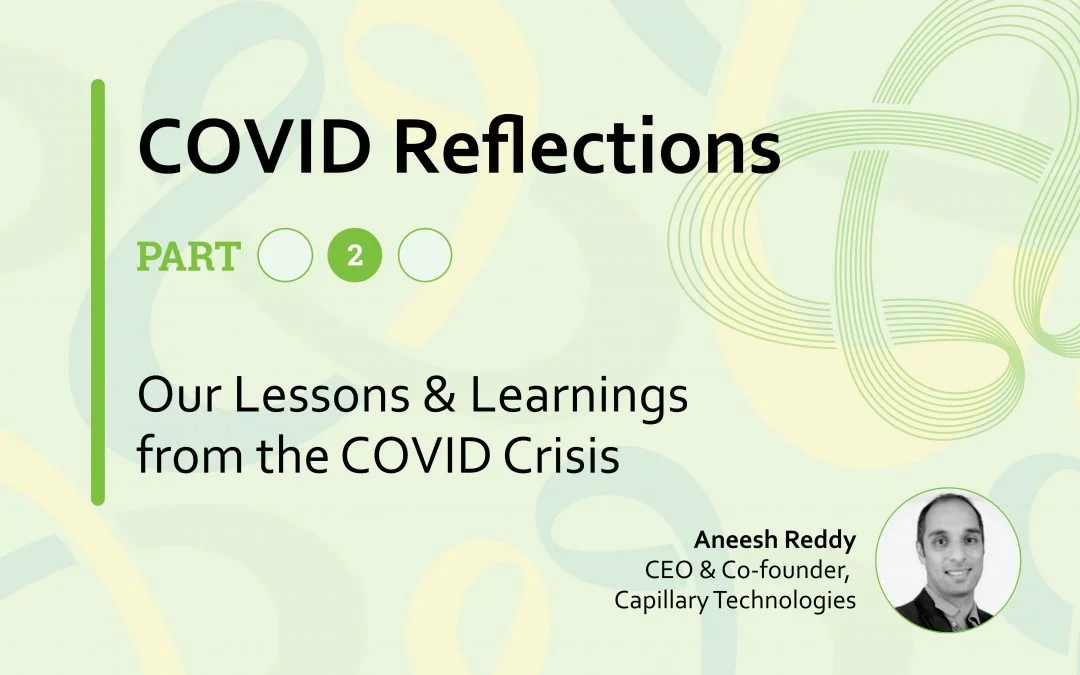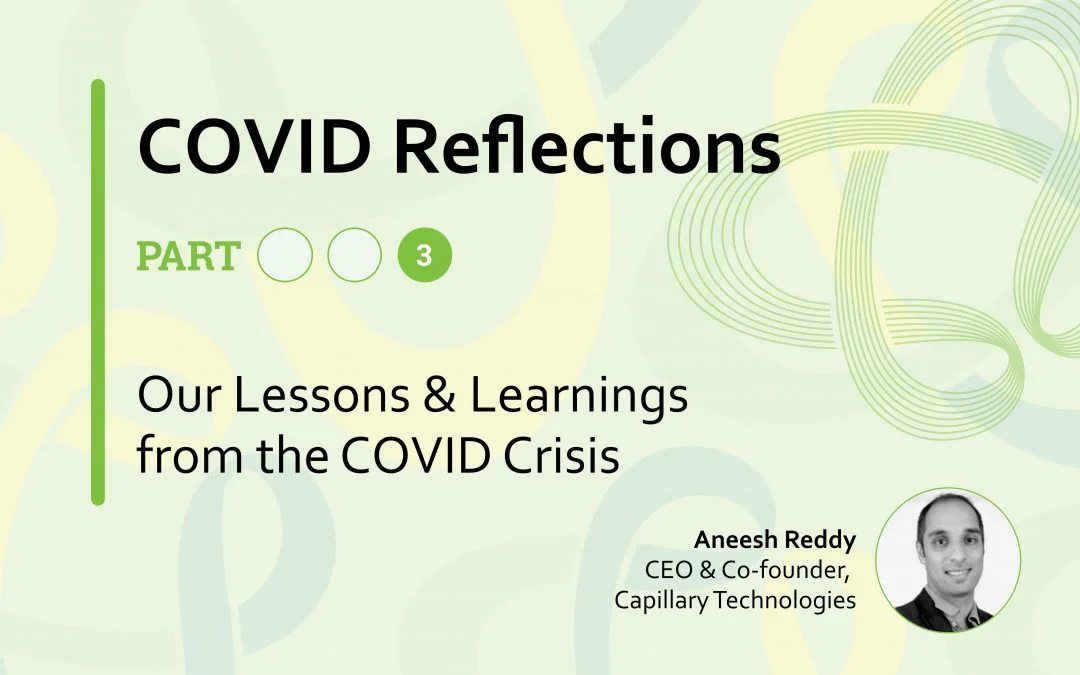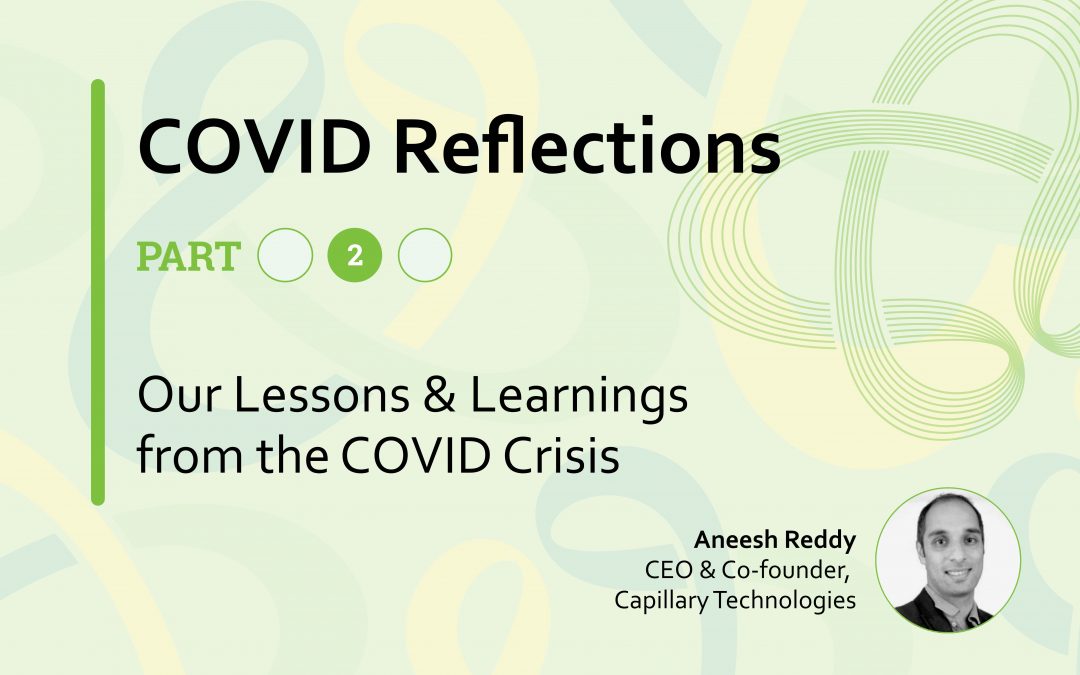- Design industry shaping loyalty programs
- Integrate easily and go live quicker
- Deliver hyper-personalized consumer experiences
Blue Rewards from Al Futtaim Group Shares Loyalty Success Stories and Evolution. Watch Podcast >
Capillary Announces 2nd Annual Captivate 2025 Summit: Transforming Loyalty Management with New AI Tech Read more >

COVID Reflections is a series by Capillary CEO & Co-founder Aneesh Reddy where he shares the challenges faced by the company during the COVID pandemic and how Capillary dealt with them. We hope the learnings will give other founders and businesses the courage, hope and resilience to navigate this crisis.
A bit of context on Capillary for those who might not know about us: We are an Asia focused SaaS company. More than 90% of our revenues come from retail customers and with the lockdowns, retail has been one of the most badly hit sectors, probably next only to travel, hospitality, real-estate and restaurants. As a derivative business to retail, we were badly affected as well. So here is a detailed blog on how it has played out for us till now and how did we circumnavigate through the crisis.
To start off, I think Covid19 has hit cash positive/ profitable businesses hardest because when you are cash positive and profitable, your cash reserves would typically never be planned for zero cash flow scenarios. For startups that guzzle cash, most expenses get paid from investor funding so business cash flows aren’t very material, and they typically have a lot of cash reserves. FY20 (April 2019 – March 2020) has been a monumental year for us. We went from a ~40% EBITDA loss/ Negative cash flows in Q4FY19 to our first ever EBITDA and Cash Positive Quarter in Q4FY20 (JFM). We were cash positive even after paying Venture debt principal and interest and working capital costs as well – cash positive to the dot.
We actually celebrated being cash positive on March 15th after we crossed that milestone. Given we were turning cash positive, we were comfortable with our cash reserves as our burn rate was consistently coming down. We were also working with our banking partners to extend our India working capital limits to cover our international receivables.
Apart from this, we were in the process of raising another $10mn of debt to further create a cash buffer. We had received term sheets for both and were a week away from a big four auditor team putting the final touches to their diligence report. I want to highlight the fact that this was not venture debt which was coming as an extension to an equity funding round. This was debt coming on the back of a strong P&L. It was a great feeling that we had finally come to the stage of being a ‘going concern’ and we’re seeing acceptance from stringent risk-averse folks like banks and debt investors.
Things were going well for us until the mid of March, and then Covid-19 happened and one country after another went into lockdown. We thought we had a small advantage in that a part of our business came from China. But data for the month of Feb indicated a ~75% reduction in cash flows. And China wasn’t showing any great signs of recovery even by mid-March.
In the middle of March, when India and a bunch of other countries in the Middle East and SEA announced lockdowns, we knew that the worst was upon us. We prepared for a crunch in cash flow without any visibility on the kind of churn we would see. Would some of our customers go bankrupt? Would we have big write-offs? We spoke to many people but no one had seen a nosedive like this ever.
When you make a plan, you keep a 10% – 15% buffer to compensate for the misses and plan for that much extra cash. However, in the worst case when the 10% cash burn climbs to 75%, it spells disaster for the business. For instance, if you had a runway of 12 months at 10% burn, you would have less than 2 months at 75% burn! (Looking back now, our cash flows in the 6 weeks from March 15th to May 1st fell by ~75%).
So we had just 2 months of runway in the new 75% burn world, and I pinned my hopes on the working capital extension and the $10mn debt coming in as both were a week away from closure. I called Rajan (Rajan has been an angel and a board member in Capillary and his experience has almost always translated to good advice), and he advised against assuming any of that debt coming in and put sense in me to take the hard calls and take them in one go. As you would have guessed by now – after dragging the decision to mid-April – neither the working capital extension nor the $10mn of debt came through.

June 23, 2020 | 4 Min Read
A bit of context on Capillary for those who might not know a

June 23, 2020 | 4 Min Read
I previously spoke about the downside of being a cash positi

June 23, 2020 | 4 Min Read
In my previous post, I spoke about how being cash positive c